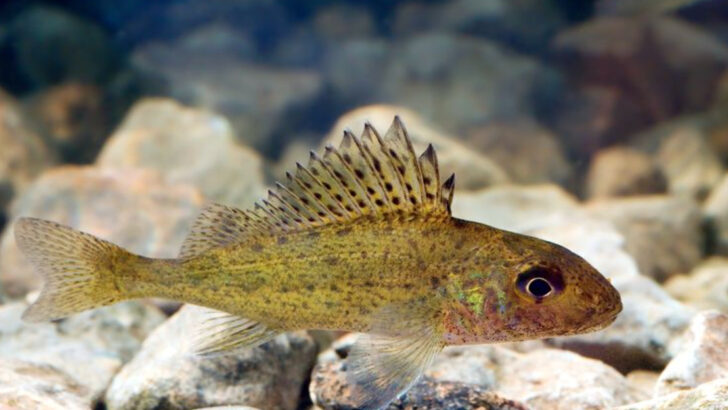Some fish are nature’s quiet janitors—working around the clock to keep our rivers and lakes cleaner. Others? They barge in, take over, and leave destruction in their wake. Across the U.S., certain fish help control algae, clear debris, and balance ecosystems without asking for anything in return. They don’t get headlines, but they’re doing the dirty work. But not all swimmers are welcome. Invasive species are sneaking into waterways, outcompeting natives, and throwing entire habitats into chaos. This list reveals the unsung heroes—and the troublemakers—lurking just below the surface. Some are saving our waters. Some are wrecking them. And you might be surprised which is which.
Channel Catfish
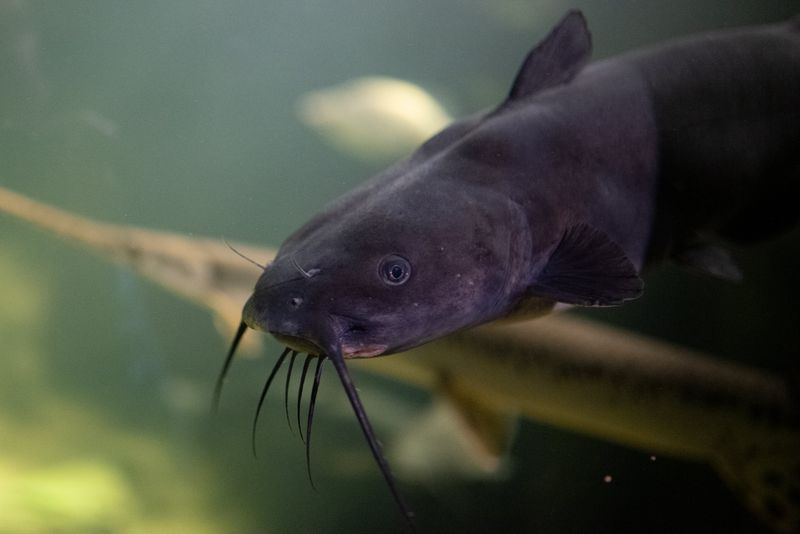
Channel Catfish are freshwater fish known for their adaptability and unique appearance. With their whisker-like barbels, they navigate murky waters with ease. These catfish thrive in various habitats, from small streams to large rivers. Their diet mainly consists of insects, algae, and small fish, which helps maintain water cleanliness. Interestingly, Channel Catfish can communicate through sounds generated by their swim bladders. Their ability to withstand various environmental conditions makes them a resilient member of aquatic ecosystems. As efficient scavengers, they contribute significantly to the cleanliness and health of their habitats.
American Eel

The American Eel is a fascinating species with a complex life cycle, migrating thousands of miles to spawn. Its elongated body allows it to maneuver through tight spaces, cleaning the waterways by consuming detritus, insects, and smaller fish. The eel’s nocturnal nature aids in avoiding predators while performing its cleaning duties. Historically, the American Eel has been an essential food source for many indigenous peoples. Despite their unassuming appearance, these eels play a vital role in maintaining ecological balance in freshwater habitats. Their presence is an indicator of a healthy waterway.
Common Carp

Common Carp, though often seen as pests, play a surprising role in maintaining waterway health. They feed by uprooting plants and stirring up the substrate, which can release nutrients and aid in water circulation. However, this behavior can also lead to increased turbidity. Originating from Europe, they have adapted well to American waters. Despite their controversial status, they contribute to controlling algae growth. Interestingly, carp are known for their long lifespans, with some living over 20 years. Their ability to survive in low-oxygen environments adds to their resilience.
Bluegill

Bluegill fish are popular among anglers and play a critical role in the aquatic food chain. Their diet consists of insects, larvae, and small invertebrates, helping control insect populations. Known for their vibrant coloration, they add beauty to the waterways. Bluegills thrive in diverse habitats, from ponds to large lakes. They are social creatures, often found in groups, which aids in their survival. A fun fact: Bluegills can produce sound using their pharyngeal teeth, a trait not common among fish. Their presence signifies a balanced and healthy aquatic ecosystem.
Largemouth Bass

Largemouth Bass are top predators in their ecosystem, controlling the populations of smaller fish species. Their presence ensures a balanced aquatic environment by preventing overpopulation. These bass are highly sought after in sport fishing, known for their exciting fight. They exhibit fascinating hunting techniques, using stealth and speed to catch prey. Largemouth Bass are adaptable, thriving in both warm and cold waters across the U.S. Did you know? They’ve inspired numerous fishing competitions, highlighting their popularity. As apex predators, they play an indispensable role in maintaining waterway health.
Rainbow Trout
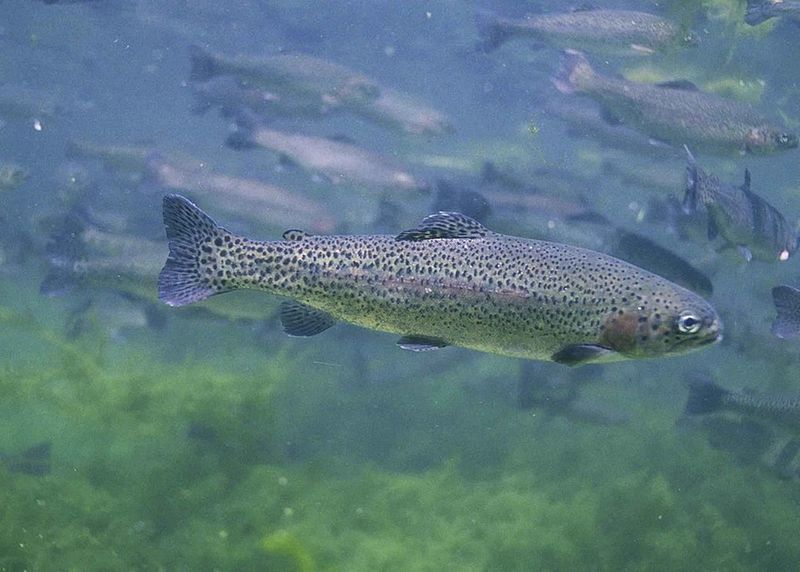
Rainbow Trout are celebrated for their striking appearance and importance in angling culture. Their diet primarily consists of insects and smaller fish, helping to maintain ecological balance. These trout are stocked in many rivers and lakes to support recreational fishing, contributing to local economies. Known for their acrobatic jumps, they provide an exciting challenge for anglers. A remarkable fact: Rainbow Trout can adapt to saltwater and freshwater, a trait known as anadromous behavior. Their presence is a sign of good water quality, as they require clean, oxygen-rich environments to thrive.
Freshwater Drum

Freshwater Drum are unique fish known for their ability to produce drumming sounds, a behavior used during mating. These sounds are created by vibrating muscles against their swim bladder. Drums are bottom-dwellers, feeding on mollusks, insects, and crustaceans, which helps control these populations. Found in rivers and lakes, they adapt to various environmental conditions. Their silvery appearance and distinctive humpback make them easily recognizable. Despite being overlooked in sport fishing, they play a crucial role in maintaining the health of benthic communities. Their presence ensures a balanced ecosystem.
Northern Pike

Northern Pike are formidable predators, known for their aggressive hunting style and sharp teeth. They help control populations of smaller fish, maintaining aquatic balance. Pikes are highly adaptable, residing in lakes and slow-moving rivers across the northern U.S. Their camouflage coloring aids in ambushing prey, making them efficient hunters. Did you know? Despite their fearsome reputation, pikes are solitary creatures. They prefer cold, clear waters, which contributes to their role in indicating water quality. Their presence is beneficial in ecosystems where they naturally occur, supporting biodiversity.
Fathead Minnow
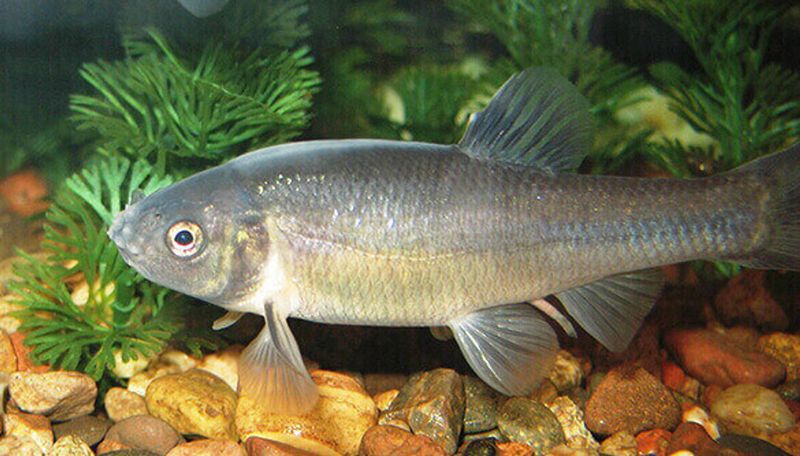
Fathead Minnows are small fish known for their role in biological control. They feed on algae and insect larvae, helping to regulate these populations in ponds and slow-moving waters. Often used as baitfish, they are vital for supporting local angling communities. Their hardy nature allows them to survive in varied environments, including polluted waters. Interestingly, Fathead Minnows exhibit social behavior, often forming schools for protection. Their adaptability and resilience make them a valuable component of aquatic ecosystems, contributing to waterway cleanliness and health.
Bowfin
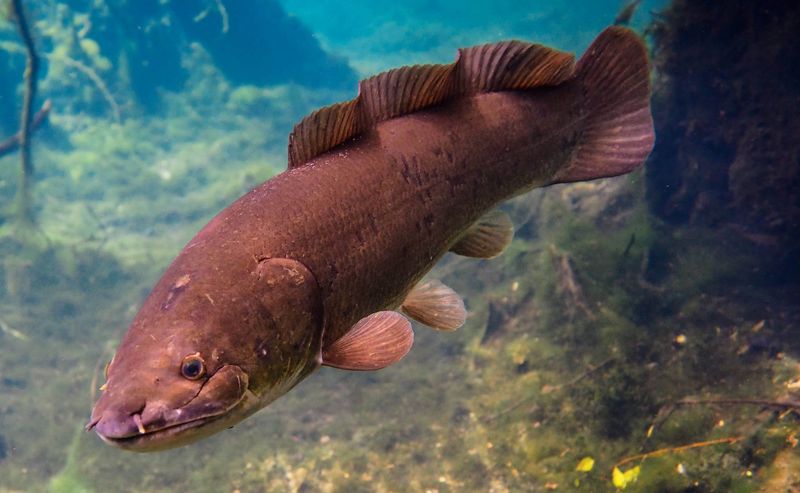
Bowfins are ancient fish with a lineage dating back over 150 million years, known for their resilience and adaptability. They inhabit swamps, marshes, and slow-moving rivers, preying on fish and invertebrates. Bowfins help maintain ecological balance by controlling prey populations. Their ability to breathe air allows them to survive in low-oxygen environments. Despite their prehistoric appearance, they are effective predators in modern ecosystems. Did you know? Bowfins are sometimes called “living fossils” due to their ancient origins. Their presence underscores the rich biodiversity of U.S. waterways.
Flathead Catfish
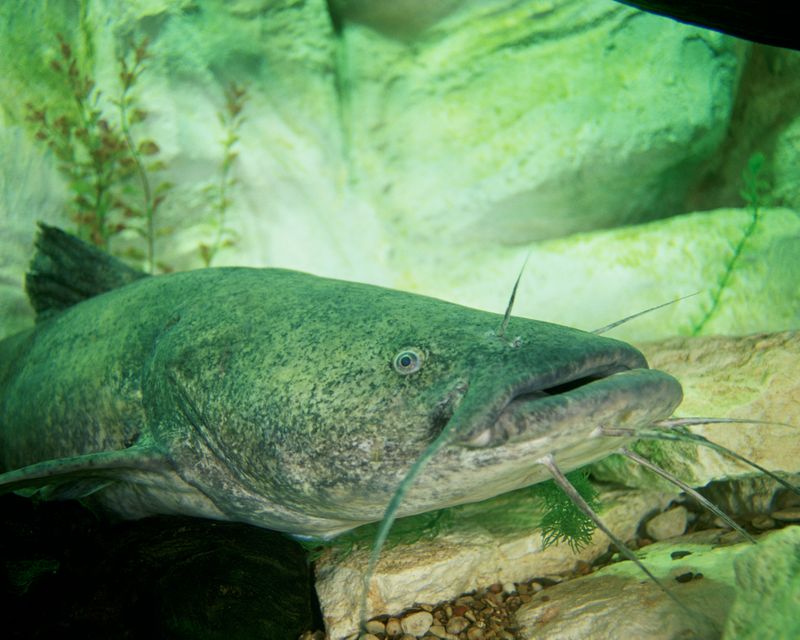
Flathead Catfish are large, solitary predators that play a significant role in controlling fish populations. They prefer deep, slow-moving waters, using their acute sense of smell to locate prey. These catfish are unique for their flat, broad heads and powerful build. Despite their size, they are elusive and have a somewhat mysterious reputation among anglers. A quirky fact: Flathead Catfish can grow to impressive sizes, with some weighing over 100 pounds. Their presence helps maintain balance in river ecosystems, contributing to the overall health of the waterway.
Asian Carp (Invasive)
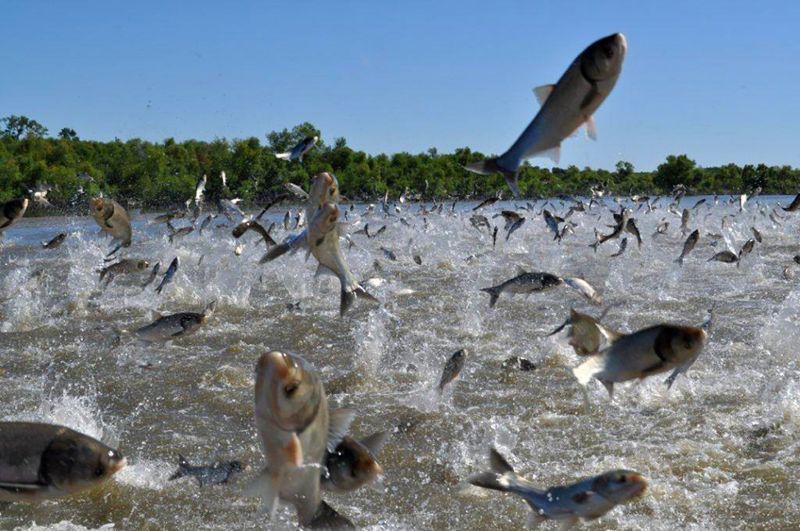
Asian Carp are invasive fish causing significant ecological disruption in U.S. waterways. Originating from Asia, they were introduced to control algae but have spread aggressively. These carp outcompete native species for food and space, leading to declines in biodiversity. Their jumping behavior poses a physical threat to boaters, adding to their notoriety. Efforts to control their population include barriers and fishing programs. Fun fact: Despite their challenges, Asian Carp are edible and considered a delicacy in some cultures. However, their presence remains a pressing issue for environmental management.
Zebra Mussels (Invasive)
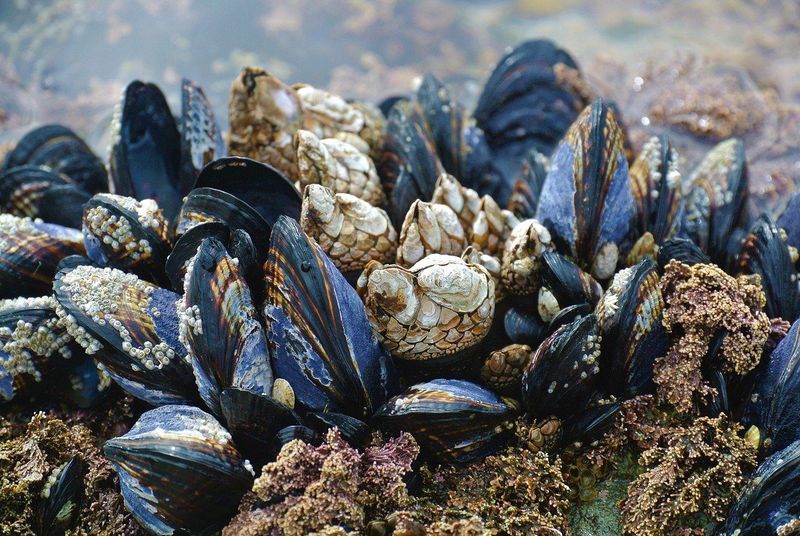
Zebra Mussels, though not fish, are notable invaders in U.S. waterways. Infamous for their prolific breeding, they quickly colonize surfaces, clogging pipes and outcompeting native bivalves. Their filtering ability, while reducing algae, disrupts food webs by depleting resources. Originating from Eurasia, they have spread through ballast water. These mussels attach firmly to hard surfaces, causing significant infrastructure damage. A disturbing fact: Zebra Mussels can alter entire ecosystems by changing nutrient cycles. Their impact underscores the importance of monitoring and managing invasive species to protect aquatic environments.
Lionfish (Invasive)
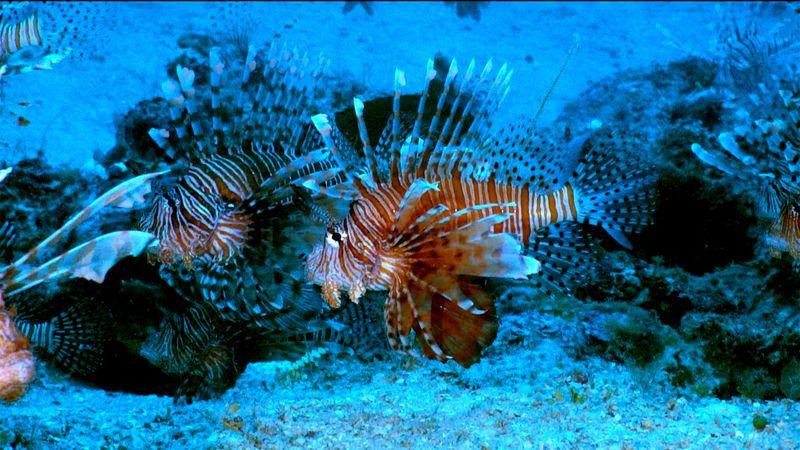
Lionfish are invasive predators with a striking appearance, characterized by their long, venomous spines. Native to the Indo-Pacific, they have invaded Atlantic waters, preying on native fish and disrupting reef ecosystems. Their population growth is rapid due to a lack of natural predators. Lionfish control efforts include spearfishing and culinary promotions. Despite their threat, lionfish are popular in aquariums for their beauty. Did you know? They can consume prey half their size, highlighting their voracious appetite. Addressing their impact is crucial for protecting biodiversity in affected regions.
Northern Snakehead (Invasive)

The Northern Snakehead, often dubbed “frankenfish,” is a formidable invasive species. Its predatory nature and ability to survive on land for short periods make it a significant threat to native ecosystems. Originally from Asia, this fish has spread to various U.S. states, outcompeting local species for resources. Northern Snakeheads are known for their aggressive feeding habits and rapid reproduction. Efforts to control their population include monitoring and removal programs. Despite their challenges, they are consumed in some cultures as a delicacy. Managing their presence is vital for ecological health.
Eurasian Ruffe (Invasive)
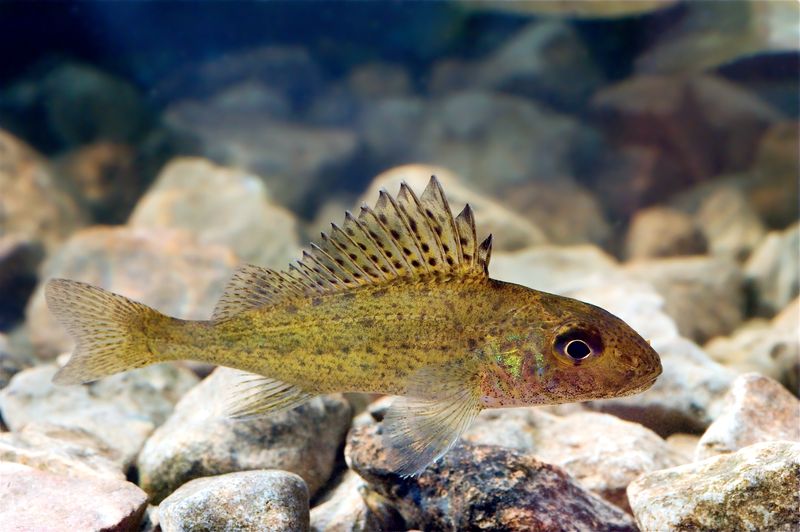
The Eurasian Ruffe is an invasive fish species causing concern in U.S. Great Lakes. Known for their spiny fins, they outcompete native fish for food and habitat, threatening biodiversity. Ruffes have a rapid reproduction rate, allowing them to establish quickly in new environments. Originating from Europe and Asia, they spread through ship ballast water. A notable aspect is their adaptability to various conditions, making control efforts challenging. Monitoring and managing their population are crucial to protect native species and maintain ecological balance in affected waters.
Round Goby (Invasive)
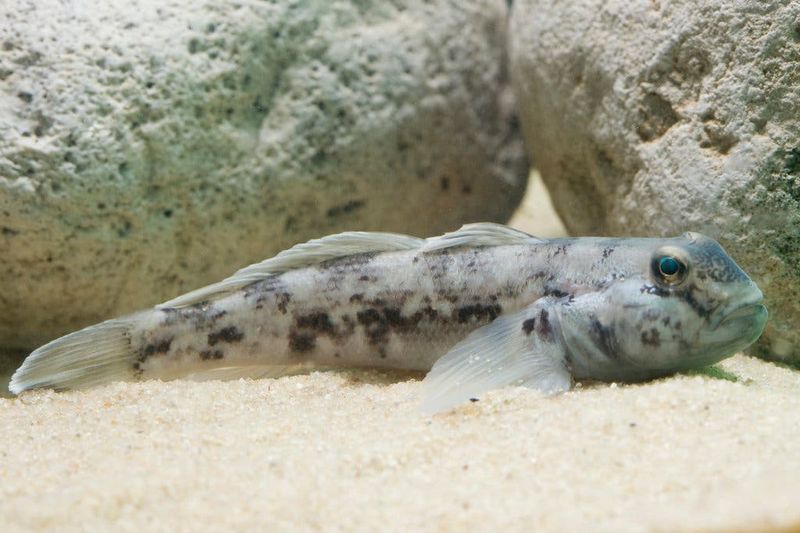
Round Gobies are small but impactful invasive fish in U.S. waterways. Their aggressive feeding behavior and competition for resources pose a threat to native species. Originally from Eastern Europe, they have spread to the Great Lakes via ballast water. Gobies are recognized by their distinctive black spot on the dorsal fin, aiding in identification. They thrive in various habitats, from rocky shores to sandy bottoms. Efforts to manage their population include fishing and habitat modification. Their presence emphasizes the need for vigilance in preventing further spread of invasive species.
Grass Carp
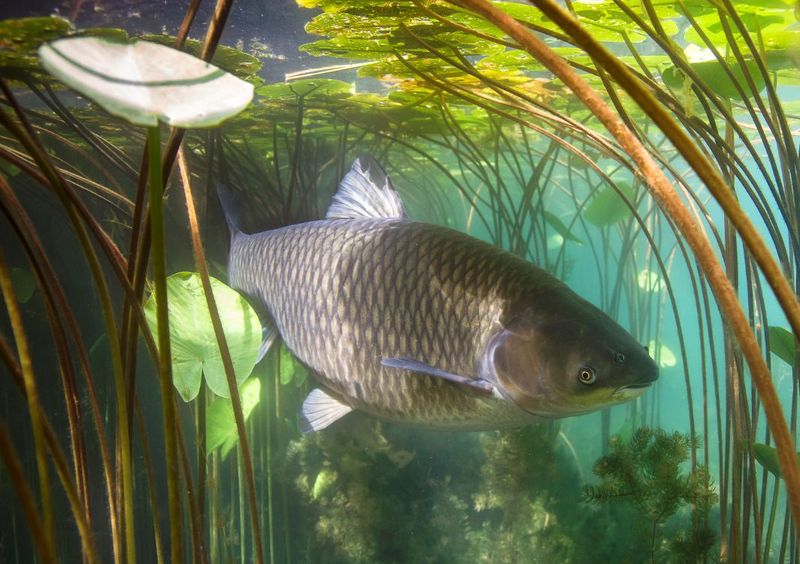
With an appetite unmatched by most, the Grass Carp is nature’s underwater gardener. Originating in East Asia, it was introduced to U.S. waters to control vegetation growth. This fish munches on aquatic plants, maintaining clear waterways essential for native species.
Its presence in lakes and rivers helps prevent overgrowth of harmful algae and weeds. The Grass Carp’s efficiency in consuming vegetation makes it a valuable ally in waterway management. However, it’s crucial to monitor their population to prevent imbalance.
Did you know? Grass Carp can consume up to three times their body weight in plants daily!

